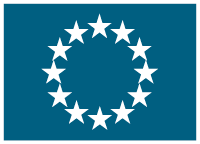European Technology and CLIL Methodology Inputs
Start date: Jun 1, 2014,
End date: May 31, 2016
PROJECT
FINISHED
Project Title: 'European Technology and CLIL Methodology Inputs'.
Project context:
The project will be carrying out in Antonio Machado Primary School; it's a Nursery and Primary bilingual (English) ICT School situated in an urban area called Baeza (Jaén) in Andalusia, in the south of Spain. This school attends: the second grade of Nursery, Primary, Special Needs and Autism Spectrum Disorders students. There are 25 groups, 600 students and 38 teachers. In the teachers staff there is a big motivation by learning and using English language and the News Technologies at school. Most of the teachers and students take part into European Programmes, E twinning and keep educational links with other European schools. The teachers staff English language level is: one teacher correspondint to B1, 11 teachers to B2, one teacher is attending to B1 classes and there are also 2 language and cultural assistants. Students learn English since 3 year old Nursery to the end of Primary, in the 5th and 6th level of Primary students also learn French, PE and Science matters are bilingual classes in English language.
As it is a bilingual (English language) and ICT school, where Science and P.E. subjects are taught in English (CLIL), we’ve decided to apply for the Erasmus project: 'European Technology and CLIL Methodology Inputs' and to develop it, considering our teachers requests about improving their communicative English language skills and English-speaking countries’ culture; as well as the acquisition of knowledge about new teaching tools, CLIL methodologies and different ways to use the new technologies in the classroom.
Number and profile of participants:
All teachers’ staff (38) and students (600) at school will take part on the project, as all the experience learning activities, methodologies, tasks and resources learned will be shared with the teachers staff. Bilingual and English as a second language teachers’ group will be a more active part into the project, this group is composed of 12 teachers: 1 Bilingual English nursery education teacher, 7 Primary bilingual English education teachers, 3 English as a second language Primary teachers and 1 Physical Education Primary bilingual English teacher.
Activities:
1.- Description, evaluation and analyze different types of methodologies and resources used in the class context
2.- To elaborate a report and a presentation about our own School organization, CLIL methodology and learning at school, the use of new technologies and which effects do they have to the linguistic and cultural surroundings.
3.- To answer some questionnaires and to carry out follow up tasks related to the CLIL.
4.- All preparations and travelling to attend the training activities.
5.-To take part as participants in two Erasmus+ KA1 learning mobility of individuals activities : "Content and Language Integrated Learning for Primary and Secondary Teachers" at I PC Exeter, U.K. PIC: 948822088 in July 2014 and "Content and Language Integrated Learning (CLIL)" at Edinburgh School of English, PIC: 944933164 Edinburgh U.K. PIC August 2015.
6.- Feedback of the new knowledges and their use in their own teaching situation
7.- New technologies will be used to communicate and to show join European projects.
Methodology:
Active, participative, collaboration (interpersonal interaction, group facilitation and problem solving), team work and opened to new learning experiences.
Outcomes and impact expected:
Students and teachers will benefit from: their English language skills and its culture update; from new ideas, techniques, tools, materials and methodologies, that the project training activities and the discussed and shared experiences with peers from other subjects and countries contribute to the current CLIL and other subjects teaching situation; from an increased use of new technologies inside and outside the classroom. Sharing all this benefits with the surroundings and European schools. Making a bigger European dimension in our school community and its surroundings.
Potential benefits in the long term:
Meeting teachers from other countries and knowing different types of school organization, will opened us new goals to future international activities in our school within Erasmus+ or E-twinning programmes. It will improve the Headmaster team organizational work. Opportunities for teachers’ mobility and school partnerships will be increased.
Get Access to the 1st Network for European Cooperation
Log In
or
Create an account
to see this content
Coordinator
- http://www.juntadeandalucia.es/averroes/machado.es
- C/ San Miguel de los Santos, 1º, 23440BaezaAndalucía (Spain)
Details
- € 5 410,00
-
 Erasmus+
Erasmus+
- Project on ERASMUS Platform